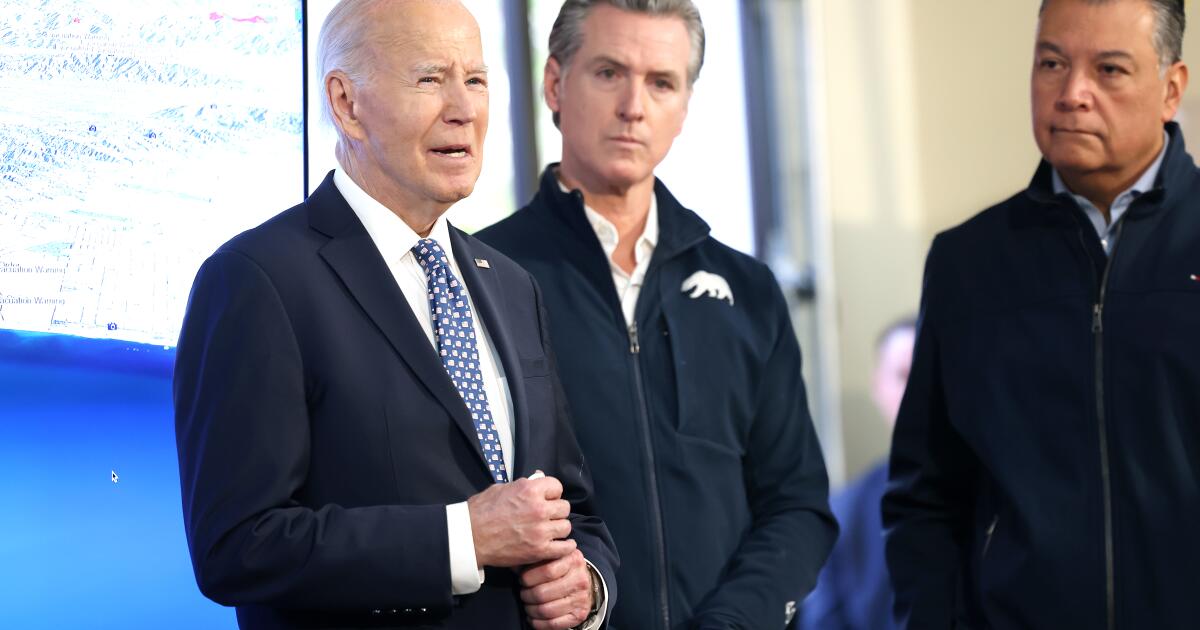Wildfires in Los Angeles County Expose Stark Difference between Presidents on Relationship with California
Incoming and Outgoing Presidents Take Different Approaches to Crisis
As communities across Los Angeles County burned in a spate of wildfires, the crisis highlighted the stark difference between the incoming and outgoing presidents and their relationships with California. President Biden stood next to Gov. Gavin Newsom, a fellow Democrat, at a fire station in Santa Monica and pledged to provide full federal support to the state.
"We’re prepared to do anything and everything for as long as it takes to contain these fires," Biden said.
In contrast, Republican President-elect Donald Trump, just days away from being sworn in on January 20, blamed "Newscum and his Los Angeles crew" for the unfolding calamity.
Trump’s False Claims about Water Policy
Hours earlier, Trump took to his social media site, Truth Social, to claim that Newsom "refused to sign a water restoration declaration," which he alleged would have allowed millions of gallons of rain and snowmelt to flow south to the areas on fire. "Now the ultimate price is being paid. I will demand that this incompetent governor allow beautiful, clean, fresh water to FLOW INTO CALIFORNIA!" Trump wrote.
Experts Debunk Trump’s Claims
Water experts, including Peter Gleick, a hydroclimatologist and senior fellow of the Oakland-based Pacific Institute, disputed Trump’s claims, stating that there is no water shortage in Southern California and that the problem with water supply for the fires is entirely the result of the massive immediate demands for firefighting water, broken or damaged pipes and pumps, and homeowners leaving hoses and sprinklers running in hopes of saving property.
Presidential Relationships with California
Newsom praised Trump during his first term for approving federal disaster funding for wildfires, but the governor has since said he had to "kiss the ring" to convince Trump to help. Newsom has commended Biden for not playing political games during disasters. "It’s impossible for me to express the level of appreciation and cooperation we’ve received from the White House and this administration," Newsom said in Santa Monica on Wednesday.
FEMA and Disaster Aid
Presidents have wide discretion when it comes to disaster aid, which could be in jeopardy in the future if Trump follows through with his threats after his inauguration. California and other states receive most federal wildfire aid through the Federal Emergency Management Agency (FEMA), including direct payments and services to homeowners and renters whose properties were damaged, and public assistance for things such as search-and-rescue teams, debris removal, and infrastructure repair.
Conclusion
The wildfires in Los Angeles County have exposed the stark difference between the incoming and outgoing presidents and their relationships with California. While President Biden has pledged to provide full federal support to the state, President-elect Trump has made false claims about water policy and blamed the governor for the crisis. As the situation continues to unfold, it remains to be seen how Trump will follow through on his threats and whether his administration will prioritize the needs of Californians.
FAQs
Q: What is the current situation with the wildfires in Los Angeles County?
A: The situation is dire, with communities across the county burning and thousands of people fleeing their homes.
Q: What is the difference in the response from the incoming and outgoing presidents?
A: President Biden has pledged to provide full federal support to the state, while President-elect Trump has made false claims about water policy and blamed the governor for the crisis.
Q: What is the role of FEMA in disaster aid?
A: FEMA provides direct payments and services to homeowners and renters whose properties were damaged, and public assistance for things such as search-and-rescue teams, debris removal, and infrastructure repair.
Q: What is the current situation with water supply in California?
A: There is no water shortage in Southern California, and the problem with water supply for the fires is entirely the result of the massive immediate demands for firefighting water, broken or damaged pipes and pumps, and homeowners leaving hoses and sprinklers running in hopes of saving property.


